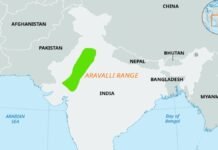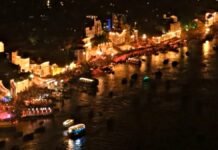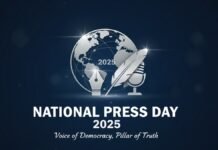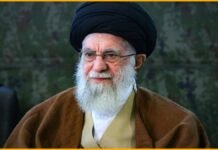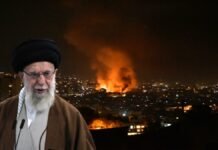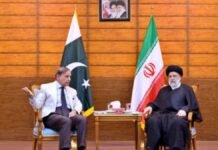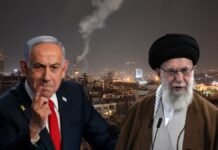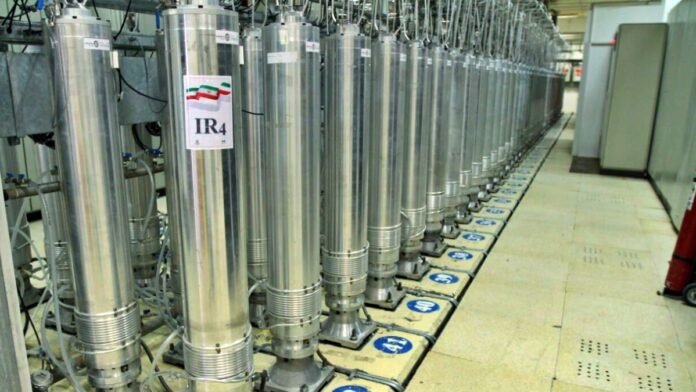
Key Points
- IAEA confirms Iran conducted secret nuclear explosive tests at multiple sites, including Marivan, Varamin, and Turquzabad
- Iran has accumulated enough highly enriched uranium to potentially build up to 10 nuclear bombs
- Recent IAEA reports detail Iran’s lack of cooperation, site sanitization, and removal of monitoring equipment
- Covert activities and uranium enrichment accelerate as nuclear talks with the US stall
- Discovery of new secret facilities and evidence of “cold tests” heighten international concerns
WashingtonD.C: A series of damning reports by the International Atomic Energy Agency (IAEA) has revealed that Iran secretly conducted nuclear explosive tests and is rapidly accumulating enough enriched uranium for multiple nuclear weapons, intensifying global concerns over Tehran’s nuclear ambitions.
Secret Nuclear Activities at Undeclared Sites
The IAEA’s latest comprehensive assessments confirm that Iran carried out covert nuclear activities at several undeclared locations, including Marivan, Varamin, and Turquzabad. Investigators found man-made uranium particles at these sites and concluded that Iran operated a structured, undisclosed nuclear program until the early 2000s, involving undeclared nuclear material and activities.
At Marivan, the IAEA determined that Iran conducted a series of explosive “implosion tests” a critical step in developing a nuclear bomb. Four of these tests involved full-scale hemispherical implosion systems designed to compress a nuclear core, a process essential for detonating a nuclear device. The agency also found evidence that Iran was preparing for a “cold test,” which simulates a nuclear explosion using natural or depleted uranium instead of weapons-grade material. Notably, after the IAEA requested access to the Marivan site in 2019, Iran sanitized the area and demolished a key control bunker before inspectors could reach it.
Rapid Uranium Enrichment and Bomb-Making Potential
The IAEA and independent analysts report that Iran is now producing 60% enriched uranium at an accelerated rate. As of June 2025, Iran’s stockpile of highly enriched uranium exceeds 400 kilograms, enough to potentially construct up to 10 nuclear bombs within days if further enriched to weapons-grade levels. This rapid accumulation is unprecedented for a non-nuclear-weapon state and is considered a grave proliferation risk.
Obstruction of Monitoring and Verification
Iran’s cooperation with the IAEA has sharply deteriorated. Tehran has removed all IAEA surveillance equipment previously installed under the nuclear deal (JCPOA), expelled experienced inspectors, and sanitized key sites to hinder verification efforts. The agency has lost continuity of knowledge regarding Iran’s centrifuge production, uranium stockpiles, and other sensitive activities, making it impossible to fully assess the peaceful nature of Iran’s program.
Nuclear Talks in Jeopardy
These revelations come as diplomatic efforts between Iran and the United States remain stalled. Iran’s foreign minister has demanded security guarantees before resuming negotiations, while the US and European powers contemplate referring Iran’s violations to the UN Security Council and potentially reinstating sanctions.
New Secret Facilities and Ongoing Concerns
In addition to previously known sites, new intelligence and satellite imagery have revealed further undisclosed nuclear facilities, such as the so-called “Rainbow Site” in Semnan Province, believed to be involved in tritium production for advanced nuclear weapon designs. The IAEA warns that Iran’s ongoing lack of transparency and its advanced technical capabilities pose a significant challenge to global nonproliferation efforts.
The IAEA’s latest findings confirm that Iran has conducted secret nuclear weapons-related tests, amassed enough enriched uranium for multiple bombs, and is actively obstructing international monitoring. These developments threaten to derail ongoing nuclear negotiations and raise the risk of further regional and global instability.















